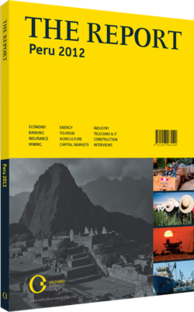OBG talks to Jorge Barata, Superintendent, Odebrecht

Interview: Jorge Barata
Where should private investment be directed?
JORGE BARATA: This is the right time to invest in infrastructure that provide the conditions for Peru’s sustained growth. If the private sector is involved in infrastructure conservation activities in the long term, it will boost the region’s economic development. Private sector participation to increase energy capacity is very important to facilitate activities that contribute to Peru’s GDP. It is also very important for the private sector to contribute to transport development. Here, the role of public-private partnerships (PPPs) is significant. Sustainable upgrades to the transport sector will make continued access possible while guaranteeing the flow of traffic, which will result in increases to productive capacity. This, in turn, will boost employment, leading to savings in time and cost, improved security and, as a result, help guarantee social inclusion and poverty reduction.
How would you assess the current concession process for available PPP projects?
BARATA: The concession process has prioritised self-sustainable PPPs, and we have thought that the state’s participation alongside investors would be indispensable in projects that are not necessarily profitable for the private sector. It would be a pity if those who promote investment in Peru stopped taking advantage of the strength and throughput of the private sector that is currently backing the country, delaying projects that need to be implemented immediately.
There is a tendency among investment promoters to divide medium-scale projects into a number of smaller projects. Although this could foster competition and improve private sector participation in the short term, in the medium term it could result in greater costs for the state, since these projects would require more management from public bodies. It would also be costly to the state to grant concessions limited to the execution of only one stage of a project, designed according to current demands. This type of concession could lead to a subsequent works that implies the destruction of the previous one. For example, if a road is built in line with current traffic flow and must be widened later on, not only does it lose part of what was previously built, it also incurs further general and utility costs.
What challenges are associated with road building?
BARATA: Andean geography and Peru’s climatic diversity present the greatest challenges to building roadways. The intensity of the natural disasters inherent to the rainforest, highlands and coast, all present in Peru, damages road infrastructure designed with statistically foreseeable parameters. Additionally, Peru’s local communities, flora and fauna must be considered seriously. Added to these natural factors are other logistical challenges: the lack of quarried material within easy reach of the project or the lack of a suitable site for depositing surplus materials.
How will the consultation law affect business?
BARATA: The preservation of the cultural heritage of native communities and the environment is very important. However, the lack of effective communication between local communities and informed spokespeople could slow down some crucial private investments. Consultation should effectively weigh the potential benefits and dangers of a project, along with its effective ranges, and provide insight on measures to mitigate any negative impact. Strong communication and careful consultation can serve us well, so long as the law retains its non-binding effect on projects.
How big a role can pension funds play in financing?
BARATA: Peruvian pension funds are an important source of financing for PPP projects. PPPs require long-term financing and the funds needed to invest their resources over the long term to improve returns, so this is a good match. Local pension funds and guarantors can collectively invest amounts between $200m and $300m per project. For bonds of greater value, projects must seek support from international markets.
You have reached the limit of premium articles you can view for free.
Choose from the options below to purchase print or digital editions of our Reports. You can also purchase a website subscription giving you unlimited access to all of our Reports online for 12 months.
If you have already purchased this Report or have a website subscription, please login to continue.

